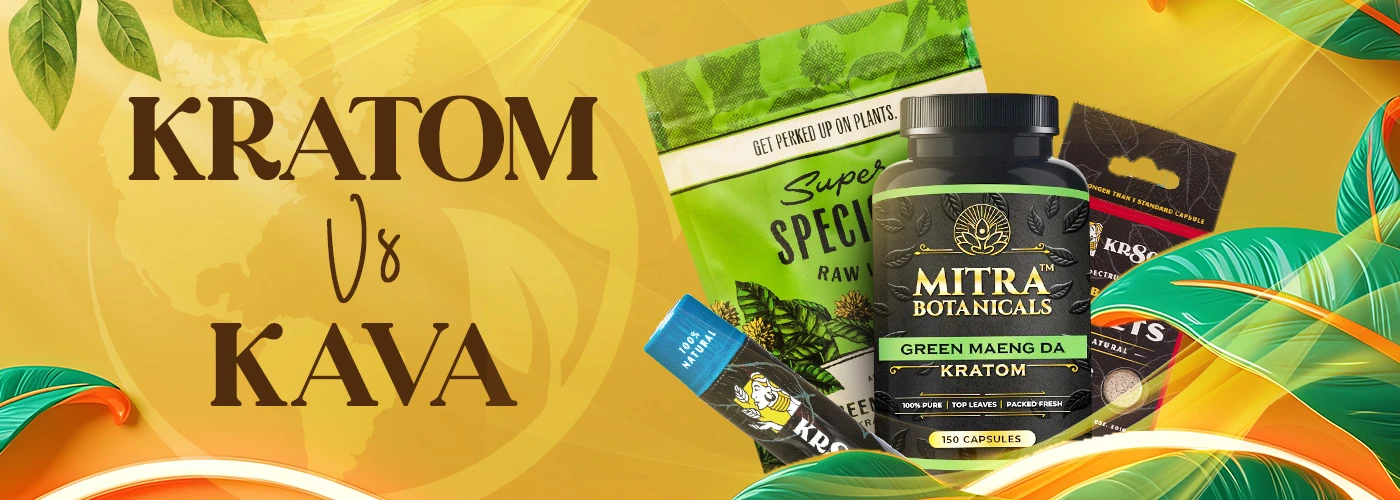Did you ever wonder if time runs backward or if it’s just human nature to acknowledge the value of someone or something late? As the world got busy innovating, it overlooked nature’s wonders. In this wild chase, some of us pause to look back and see what we have left behind, and we see that nature still holds secrets filled with goodness that need more attention. Kratom and kava are two such natural ingredients that need to be talked about.
Today, we will explore their unique effects and potential health benefits to understand what makes them what they are.
What is Kratom?
Mitragyna speciosa, popularly known as kratom, is a tropical tree belonging to the coffee family native to Southeast Asia, specifically in countries like Indonesia, Malaysia, and Thailand. Southeast Asians have traditionally used kratom leaves to make kratom tea and decoction to improve mood and energy for centuries. Since it is part of the coffee family, it should be obvious that they work alike.
Kratom became popular in the West over the past few decades, and alternative wellness enthusiasts who seek natural remedies use it for mood enhancement and energy boosts.
What is Kava?
Kava is a root (scientific name: Piper methysticum) native to the South Pacific islands. Like kratom, it, too, has a rich cultural history covering social and ceremonial purposes. The most popular kava recipe is the kava drink, which is made by mixing kava powder with water. Kava powder comes from ground kava root.
Kava contains active ingredients called kavalactones, which are known to create calming yet uplifting and relaxing effects, which may be the opposite of kratom.
What Are the Differences Between Kratom and Kava?
Before diving into the differences, you might be surprised to know that there are similarities between the two. Evidence shows that kratom is typically effective as a mood booster, as its sensory experience helps the user find socializing and vibing easy. On the other hand, kava has the potential to improve sociability, ease a worrying mind, soothe discomfort, promote physical relaxation, and produce euphoric sensations.
Not so different, are they? Well, they are. A few factors that set them apart from each other.
-
Pharmacological Differences
Kratom and kava differ in active compounds and actions. Kratom demonstrates a combination of stimulating and sedative effects, depending on the user and the dose.
Kava’s active ingredients primarily work on the central nervous system, which helps promote relaxation and reduces anxiety without inducing sedation.
-
Uses of Kratom and Kava
Kratom is particularly helpful in easing the mood, boosting productivity, and elevating vitality. Kava reduces anxiety and stress and promotes a sense of overall well-being.
-
Benefits of Kratom and Kava
When used in moderation, kratom, too, like kava, may provide relaxation, enhance mood, and boost focus, while kava reduces worries, improves sleep quality, and soothes sore muscles.
Are Kratom and Kava Safe?
Premium kratom and kava products are considered safe when used in moderation. Avoid consumption if you have a pre-existing liver condition or are taking medications. We recommend choosing natural products over synthetic ones, as they are safer and unadulterated.
The Verdict
You can use kratom and kava to experience sedation, but they are not exactly similar. Kratom typically works as a stimulant but also has sedative properties. On the other hand, kava is known for inducing relaxation and has been used for thousands of years as a ceremonial drink during social interactions. So, what you use depends on you.
For instance, if you want to relax after lunch, kava is a good choice. If you want to get into a vibe and ease your mind, it’s kratom for you. Both are safe and natural ways to enhance your daily wellness regimen. For the best result, consult an expert to help you choose the perfect product.
Summary: Kratom and kava generally have similar effects and are often used similarly. However, they have some differences, and these have been explained in this blog post by Whole Earth Gifts.



